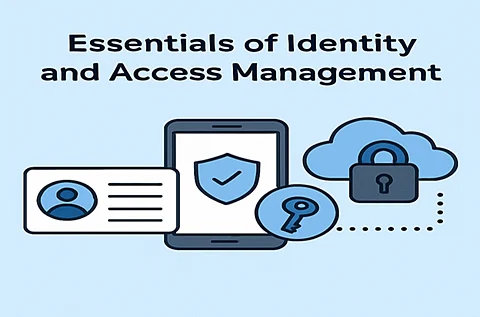

In an era where digital breaches threaten the very core of businesses, Identity and Access Management (IAM) has transformed into a critical pillar of modern cybersecurity strategy.. Anjan Kumar Kaleru, a cybersecurity expert, explores these critical advancements, shedding light on how modern IAM frameworks are transforming digital security infrastructures globally.
Traditional identity management asked simple questions: Who are you? How are you proving it? What can you access? Today’s IAM landscape, however, demands a more intricate and dynamic system. Modern frameworks integrate identity governance, multi-factor authentication, and role-based access control into an interconnected ecosystem. These shifts are essential as organizations navigate complex hybrid and multi-cloud environments, ensuring robust protection without compromising agility.
One of the standout innovations in Identity and Access Management (IAM) is the automation of the identity lifecycle. Gone are the days of tedious, error-prone manual provisioning and deprovisioning processes. Modern automated systems now react instantly and intelligently to organizational changes—such as onboarding, role shifts, promotions, or offboarding—dramatically reducing the risk of dormant accounts being exploited by malicious actors. These sophisticated lifecycle management tools not only shrink the attack surface and eliminate potential vulnerabilities but also significantly increase operational efficiency and accuracy, ultimately delivering robust security at the dynamic speed of today’s business environments.
Passwords have long been the weakest link in cybersecurity. Innovative authentication mechanisms now combine knowledge (passwords or PINs), possession (tokens or mobile devices), and inherence (biometrics). As threats grow more sophisticated, organizations are embracing Multi-Factor Authentication (MFA) as a mandatory standard. MFA has proven to block over 99% of account compromise attacks, showcasing its critical role in a strong identity defense system.
The innovation curve has bent even further with the groundbreaking emergence of adaptive authentication. Rather than relying solely on static credential checks, this dynamic and intelligent model assesses contextual cues such as device, location, network, and user behavior patterns in real time. By continuously analyzing these factors, adaptive authentication dynamically adjusts security requirements based on the perceived risk level. This ensures that authentication strikes a fine and necessary balance between robust security and seamless user convenience. Looking ahead, the future points toward the evolution of continuous authentication, where identity is verified persistently throughout an entire user session, not merely at the initial login stage.
Governance structures have evolved significantly, transitioning from basic compliance obligations to becoming central, proactive pillars of a comprehensive security strategy. Organizations across industries are increasingly adopting Zero Trust frameworks—built firmly on the mantra of “never trust, always verify.” This transformative model demands continuous authentication, dynamic authorization, and rigorous validation of every access request, recognizing identity as the new, critical security perimeter. It empowers organizations to implement micro-segmentation, enforce least privilege access principles, and monitor user behavior in real time, thereby tightening security controls without suffocating operational agility, flexibility, or innovation.
Cloud-delivered IAM services are rewriting the rules for identity management. Identity-as-a-Service (IDaaS) offers scalable, subscription-based security solutions that eliminate the heavy overhead of traditional on-premises systems. These platforms ensure consistent security policies across hybrid environments while rapidly adapting to emerging threats. Regular updates and built-in advanced authentication capabilities further empower organizations to stay ahead of sophisticated cyberattacks.
A transformative new era is being ushered in through decentralized identity established right on the blockchain whereby users retain ideal agreement of their digital identities. Before now, identity providers could take hold of the work and step into contested issues of certification; hence, a central body and authority needed to certify identities. This majorly gave way to many cyber confrontations, identity theft, and unauthorized access of its credentials. This innovation is in tandem with the fresh customer demand for privacy, independence, and data control. For an organization, this innovation means customer trust can be greatly enhanced, yet brand loyalty decreased. Furthermore, this will increase their exposure to compliance, regulatory, and security issues in making the already complex digital domain even more tortuous.
Continuous monitoring, with Machine Learning and behavioral analytics at the back, has now become a must-have in one's cybersecurity framework. These systems can detect anomalies not just from human user behavior but also across machine identities. Automated alerts and real-time analysis give security teams less time to react and increase the dwell time of threats or even allowing the breach to go too far.
The innovations discovered by Anjan Kumar Kaleru show that IAM has become more than just a technical afterthought; it is a very critical element for organizational resilience and digital trust. Advanced authentication, decentralized identity models, and Zero Trust architectures shall be adopted by organizations as safeguards, presently to defend against contemporary threats and future-proof their digital ecosystems.
